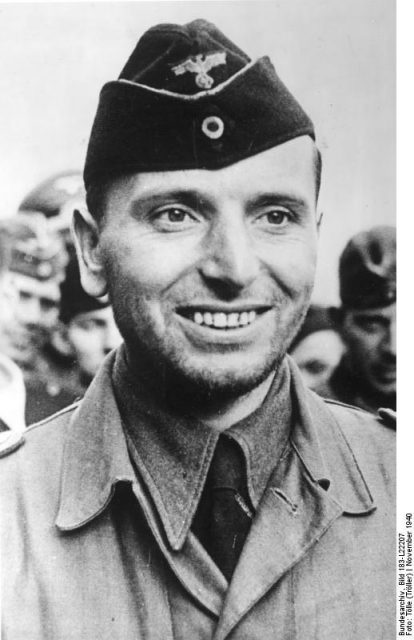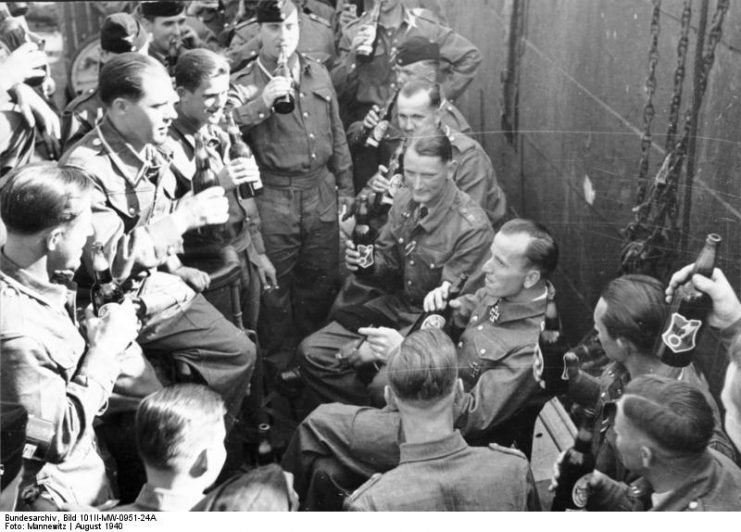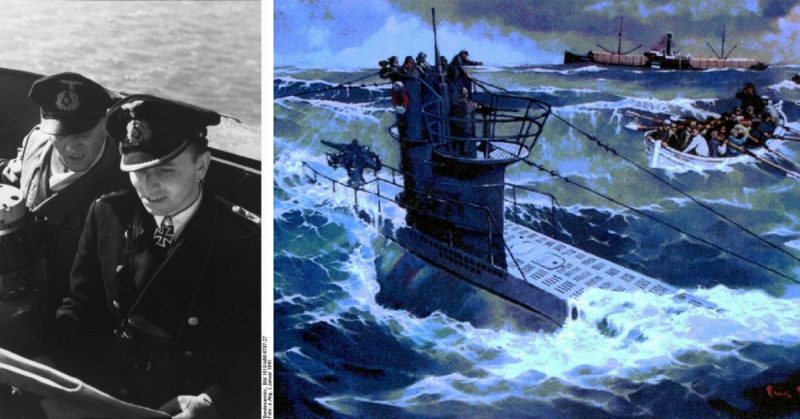In recent days, photographs have emerged of a real terror of the Second World War. These pictures do not depict something like the legendary V2s or atomic bombs, but something equally as deadly, U-boat commander Otto Kretschmer, the most successful submarine commander that served in the Second World War. Kretschmer sunk 47 ships in just under 18 months, and over 273,000 tons of material, making him the most successful navy commander of the war in general.
The photos depict some incredibly impressive moments in the U-boat commanders life and career. One photo comes from his receiving of the Knights Cross of the iron cross with oaks from Adolf Hitler himself, dated November the 12th 1940. Also discovered was a picture from the November patrol that earned him the award, depicting him at his periscope in the U-99. The patrol sunk three British merchant cruisers in one fell swoop. Other photos include pictures of him with Kapitanleutnant Herman Michahelles in the conning tower of the U-35. Kretschmer was Hitler’s most successful admiral, and though his U-boat career was only 18 months, it was the most effective career in the entire Second World War.

These pictures have all been collected for usage in the book “Otto Kretschmer: The Life Of Germany’s Highest Scoring U-Boat Captain”, being written by Lawrence Paterson. In the compilation, the captain is shown looking nervous when meeting the Fuhrer, giving orders ahead of dive, and in a rare moment of peace sharing a beer with his fellow submariners after sharing in a successful mission. The book goes over the key moments of Kretschmer’s life and career, such as his long line of awards such as the Iron cross, Wehrmacht long service award, U-boat war badge, and the aforementioned Iron Cross with Oak Leaves and Swords. There is even a photo of his crew looking on, while he is gifted a copy of “The Kretschmer March”, a song written about him. The book also reveals that his career was shortened due to his capture, caused by a depth charge forcing his U-99 to surface while attacking two British ships. Kretschmer decided to scuttle his submarine and was captured along with all but three of his crew. He was then sent to Canada to become a prisoner of war.

Kretschmer was born on May the 1st 1912, in Heidau, Neisse. At the age of seventeen, he spent eight months living in England, where he studied at Exeter College, focusing on mathematics, English and chemistry. On his return in 1930, he joined the Reichsmarine and quickly rose through the ranks.After the war, Kretschmer was sent to a camp for those who firmly believed in the Nazi cause, and was only allowed to return to life in Germany in 1947. He joined the new Bundesmarine, before becoming a Nato Staff officer in 1962. Kretschmer retired from service in 1970 and died in 1998 at the age of 86.
Due to his incredible record, Kretschmer was of interest to both sides and respected by those he fought.Indeed, after he was captured, the British Admiralty’s director of anti-submarine warfare, George Creasy, arranged a personal meeting. The meeting to place at the director’s apartment in London, in an attempt to learn whatever he could from the legendary submariner. It is likely in the opinion of Paterson, the author of the book, that if significant advances had not been made in anti-submarine warfare during the interwar period, Kretschmer would have been even more effective. Indeed, had he not been captured due to the depth charge, it is very likely that Kretschmer, the most successful U-boat commander of the Second World War, would have shot ahead of the three First World War commanders who hold more prolific records than he.
